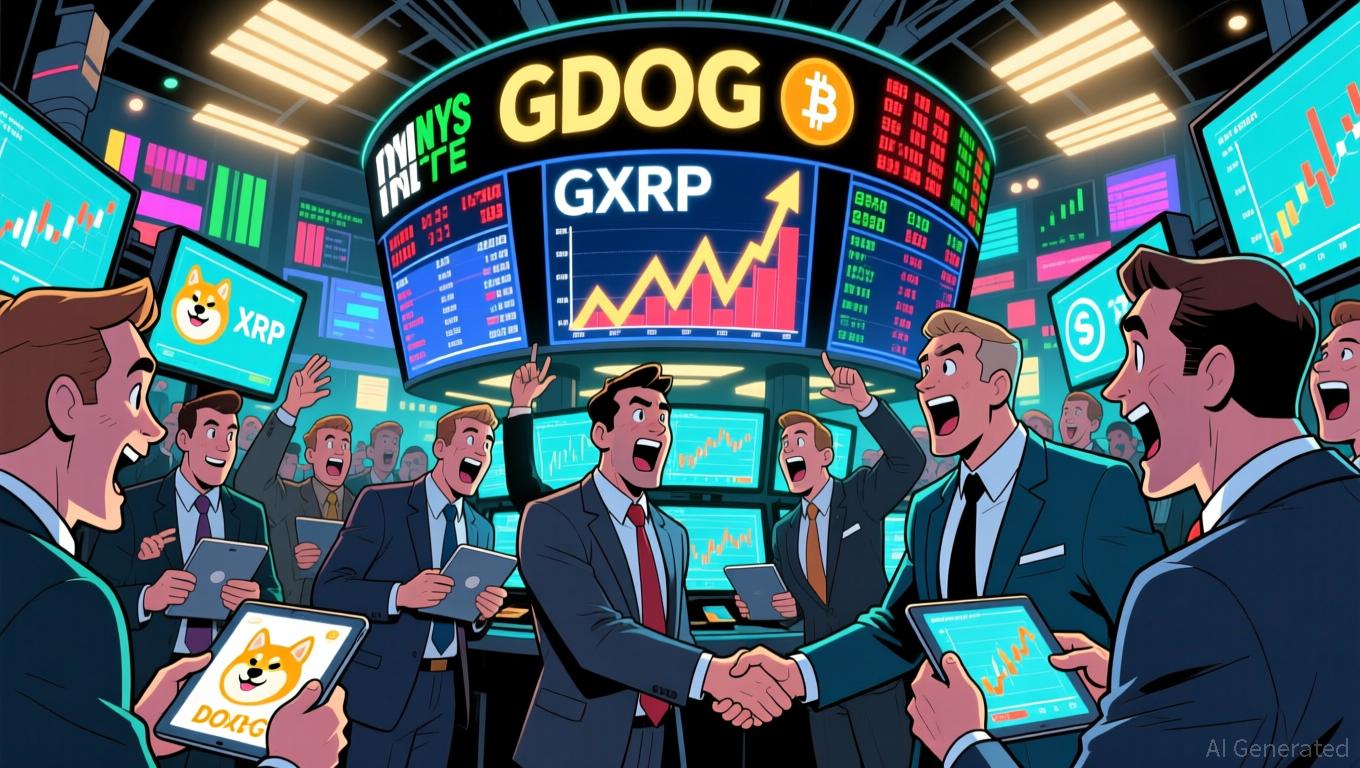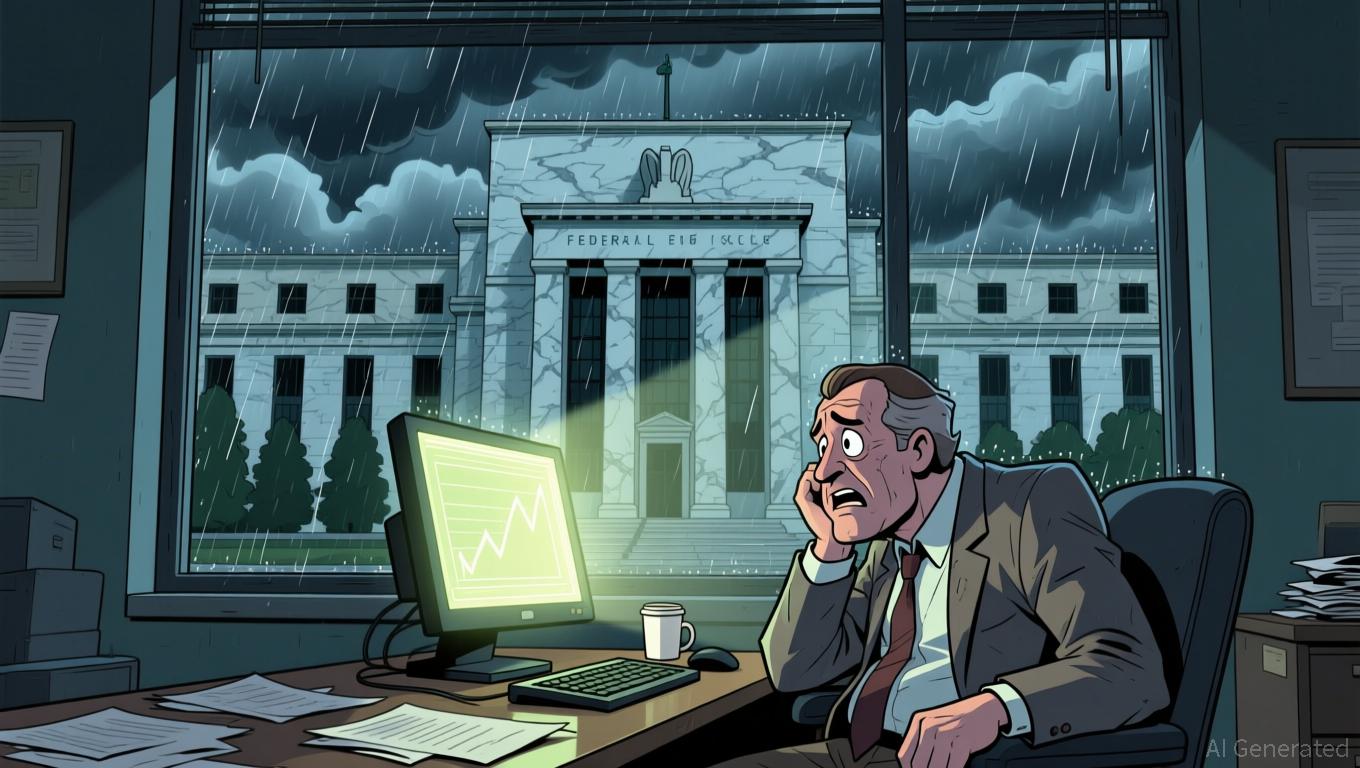Assessing the Factors Behind COAI's Significant Price Drop in Late November 2025 and Its Long-Term Impact on Investment
- COAI's 88% year-to-date plunge in late 2025 exposed systemic risks in AI/crypto markets, driven by governance failures, regulatory ambiguity, and overvaluation. - C3.ai's $116.8M loss, leadership turmoil, and lawsuits triggered panic, while the CLARITY Act's vague oversight deepened institutional investor caution. - The selloff highlighted a stark divide between foundational AI tech and speculative crypto assets, with analysts warning against conflating sector-wide risks with isolated failures. - Long-te
Catalysts Behind the Collapse
The immediate spark for COAI’s rapid decline was a governance crisis at C3.ai, a key player in the AI infrastructure space. In the first quarter of 2025, C3.ai
At the same time, the rollout of the CLARITY Act—a new regulatory initiative designed to clarify oversight of AI technologies—added another layer of uncertainty. Although the act aimed to bring order, its ambiguous wording left AI-based crypto projects like COAI in a legal limbo, discouraging institutional investors and increasing market instability.
Sector-Wide Selloff and Market Sentiment
The downturn in COAI mirrors a broader sense of unease within the AI and crypto AI markets. While companies such as Celestica (CLS) benefited from analyst upgrades due to strong infrastructure demand,
Nonetheless, the decline also highlights persistent doubts about the durability of AI-driven growth stories.
Long-Term Investment Implications
For those with a long-term perspective, the COAI plunge presents a dilemma: it could be a chance to buy at lower prices, but the risks are elevated.
Conclusion: Navigating the Uncertainty
The COAI collapse serves as a warning about confusing technological potential with financial reality. While the immediate triggers—C3.ai’s leadership crisis and regulatory uncertainty—are specific to late 2025, they expose deeper flaws in the AI crypto ecosystem. For investors, moving forward will require a careful strategy: managing short-term risks while closely watching changes in corporate leadership and regulatory policies.
As the market processes these developments, one thing stands out: the COAI episode highlights the importance of thorough research in a sector still defining itself. Whether this downturn becomes a buying opportunity or a red flag will ultimately depend on the people and regulations shaping the industry’s future, not just the technology alone.
Disclaimer: The content of this article solely reflects the author's opinion and does not represent the platform in any capacity. This article is not intended to serve as a reference for making investment decisions.
You may also like
DeFi's Automation Shortfall Addressed: Orbs Introduces dSLTP to Achieve CeFi-Grade Risk Control
- Orbs launches dSLTP, a decentralized stop-loss/take-profit protocol for DEXs, bridging CeFi automation with DeFi. - The protocol automates risk management via on-chain orders, reducing real-time monitoring needs during volatility. - Built on Orbs' Layer-3 infrastructure, it enhances DEX functionality with CeFi-grade tools while maintaining decentralization. - This innovation addresses DeFi's automation gap, potentially driving DEX adoption and institutional-grade on-chain trading.

XRP Latest Updates: XRP ETFs Enhance Market Liquidity, Large Holder Sell-Offs Postpone Price Increases to 2026
- XRP ETFs launched in late 2025 (e.g., Grayscale's GXRP) expanded institutional access, but whale sales delayed price gains until 2026. - XRP traded near $2.12 as 41.5% of its supply remains in loss, with whale-driven volatility and structural supply imbalances persisting. - Ripple secured $500M institutional backing for XRP Ledger infrastructure, while projects like XRP Tundra accelerated tokenization plans. - XRP trails Ethereum in market cap ($129B vs. $373B) due to lack of smart-contract capabilities,

Dogecoin News Today: Grayscale's Alternative Coin ETFs Indicate Change: Bitcoin Withdrawals Differ from Rising Interest in Altcoins
- Grayscale launches GDOG and GXRP ETFs on NYSE, offering direct exposure to Dogecoin and XRP via spot ETPs. - ETFs convert private trusts to public offerings, aligning with industry trends to boost liquidity and attract institutional capital. - GXRP competes with existing XRP products ($422M inflows), while GDOG follows DOGE's rise to 9th-largest crypto by market cap. - SEC's "Project Crypto" framework and FalconX partnership strengthen Grayscale's position in regulated altcoin investment vehicles. - Altc

Bitcoin Update: Federal Reserve Postponements and $1.2 Billion ETF Withdrawals Trigger 26% Drop in Bitcoin Value
- Bitcoin falls 26% to $83,000 amid Fed's delayed rate-cut timeline and $1.2B ETF outflows, marking its longest losing streak since 2024. - Analysts warn of structural risks, with Bloomberg's Mike McGlone projecting a potential $10,000 drop and Cathie Wood revising bullish 2030 forecasts. - Market volatility intensifies as JPMorgan's index exclusion proposal sparks crypto sector backlash and S&P 500 defensive sector shifts highlight interconnected risks. - Fed's December rate-cut speculation and upcoming i
